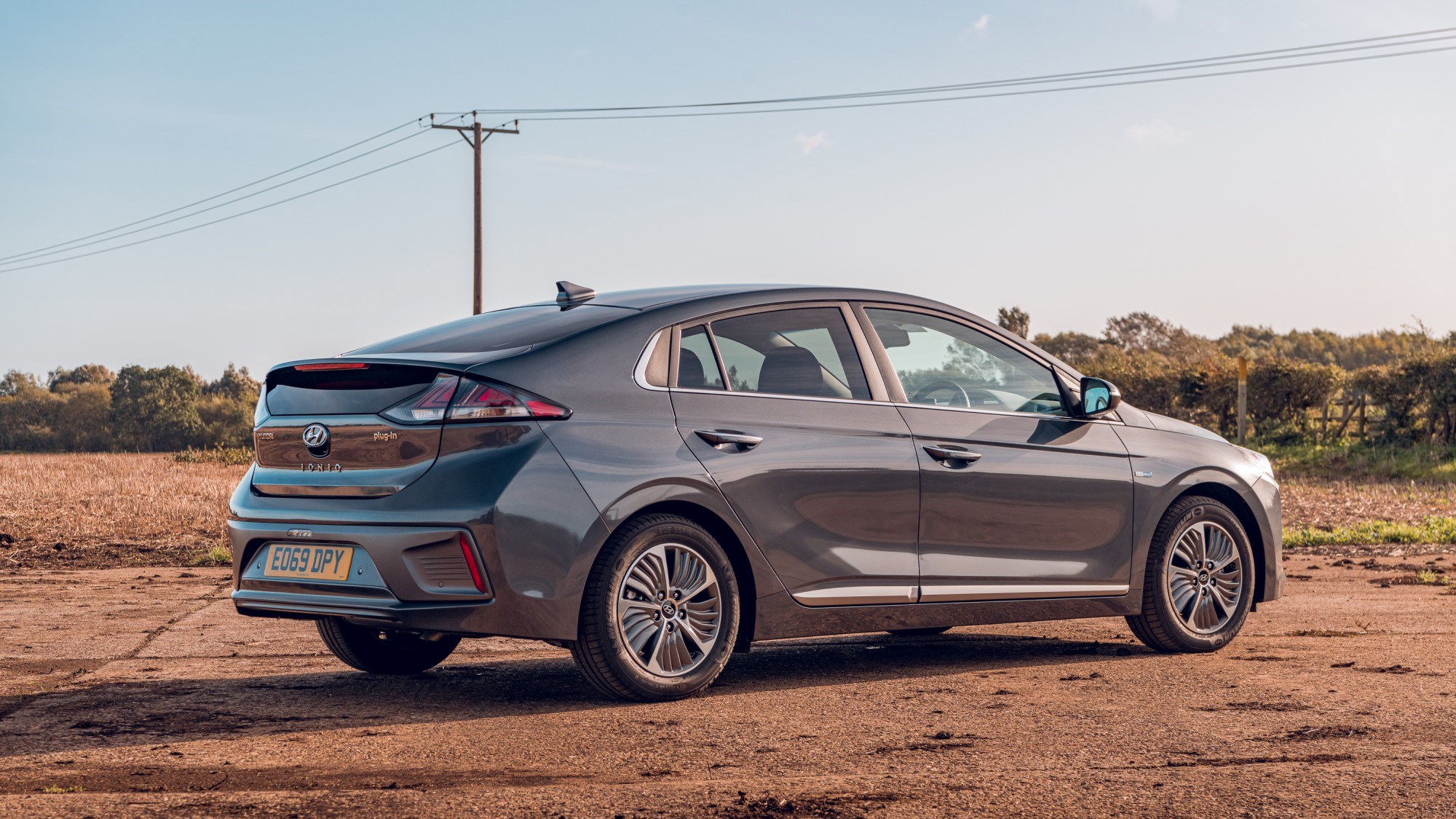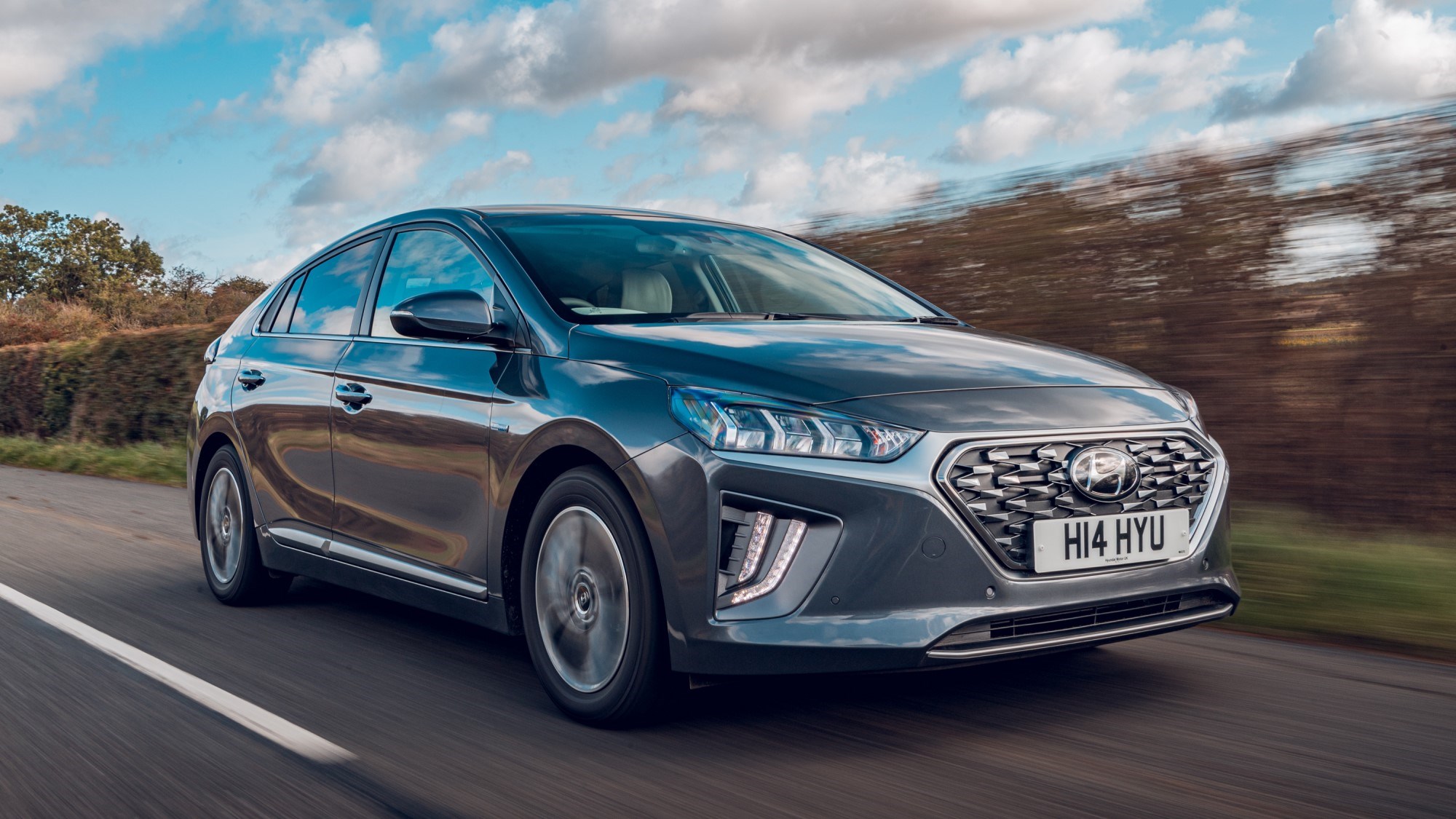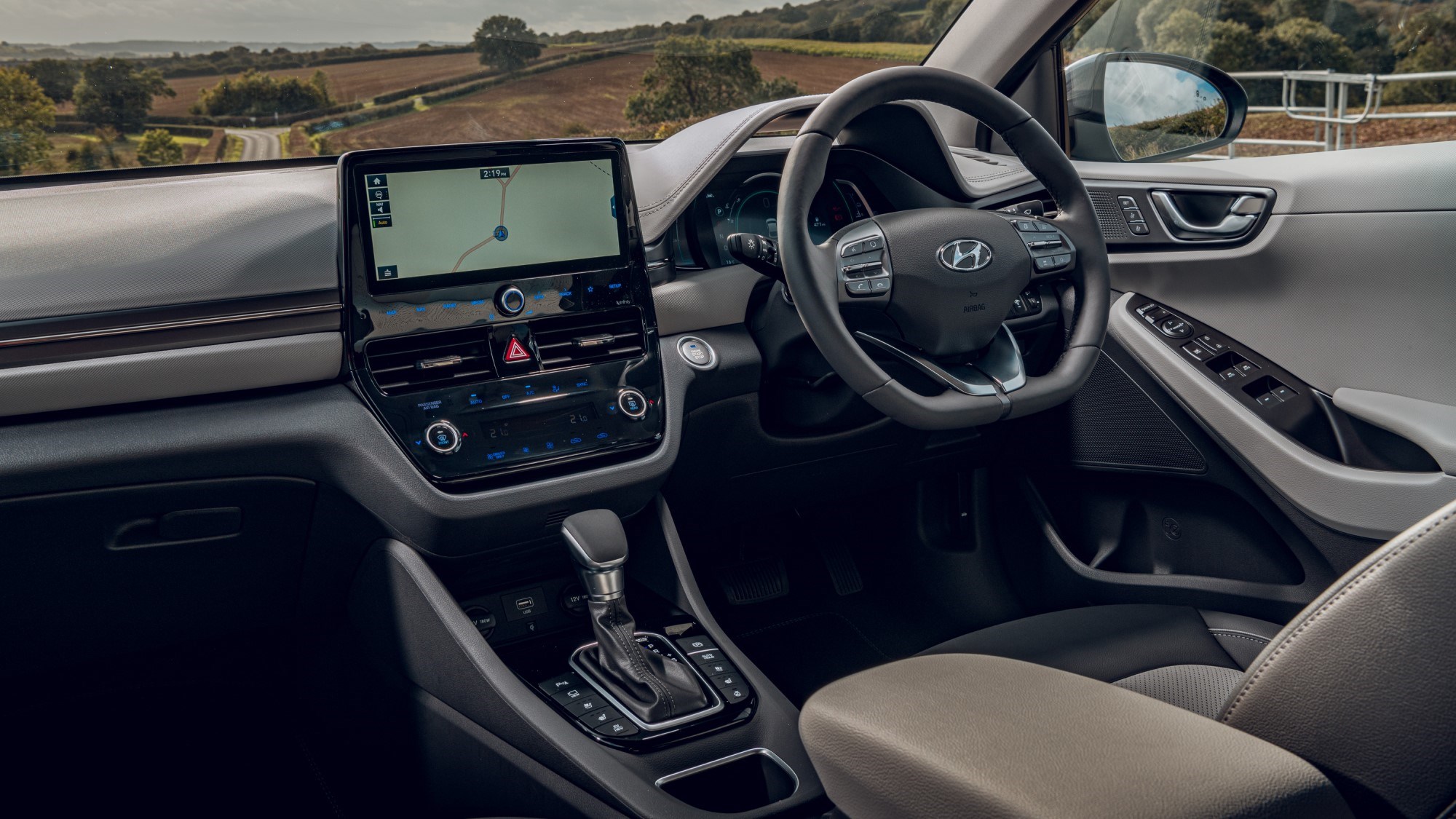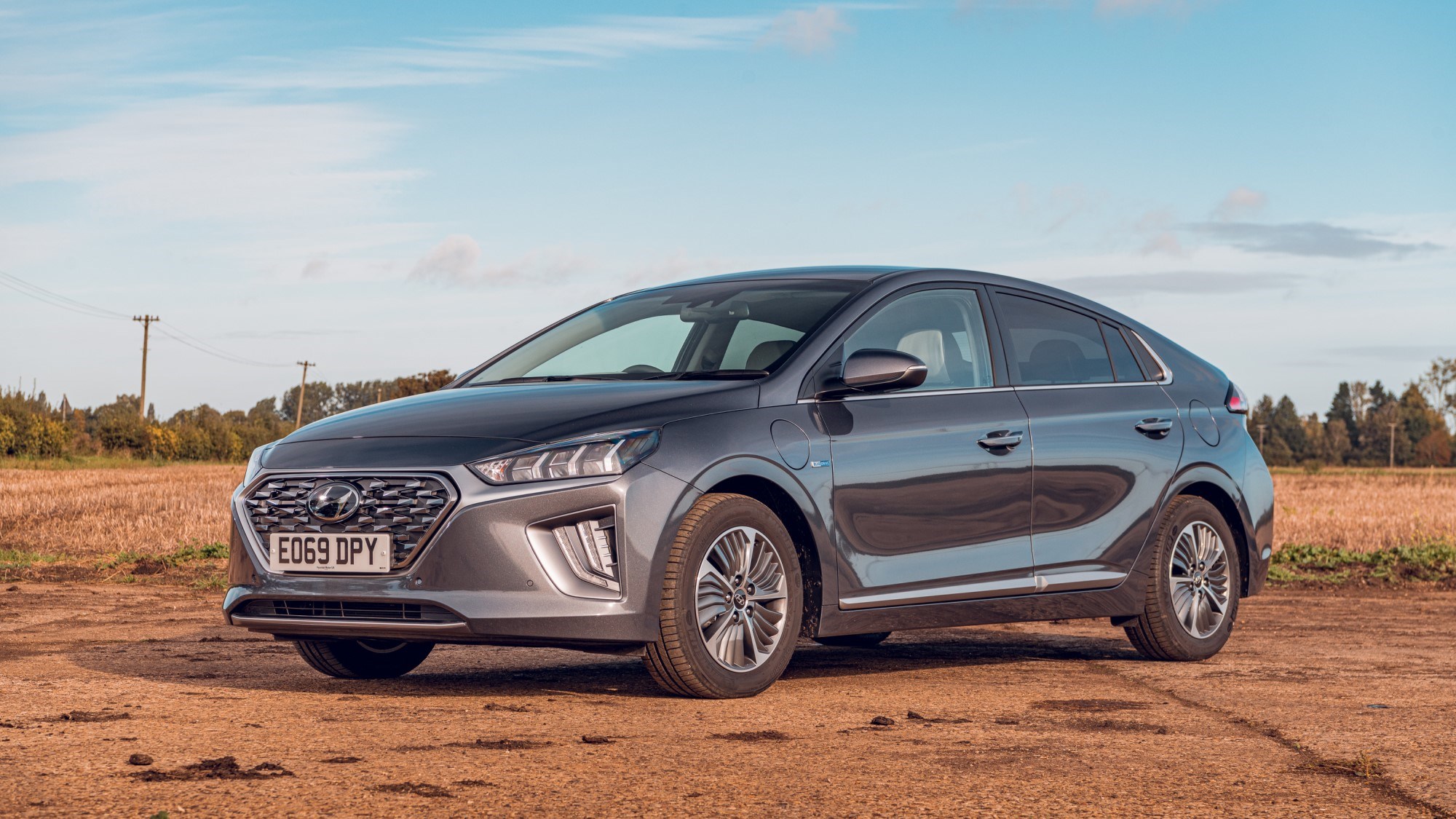► Understated yet accomplished hybrid
► The shrinking violet’s Toyota Prius?
► Available as self-charging or plug-in
The Ioniq is Hyundai’s purpose-built hybrid hatchback. Designed from the ground up to rival the likes of the Toyota Prius, it was the first car to be offered with hybrid, plug-in hybrid and fully electric engine options.
This review concentrates on the hybrid versions, which were both updated in 2019 (we’ve a separate review of the Ioniq Electric).
That triple-crown of electrification is an accolade now shared with the Hyundai Kona as well as the Kia Niro, but unlike its SUV siblings the Ioniq’s sights are still set firmly upon the perennial (and still popular) Toyota Prius.

The Ioniq takes the form of a sleek (if not particularly pretty) five-door, five-seat hatchback. It’s far more conventionally styled than the Prius – plainer and less contentious than that car’s mad anime cuts and slashes, though it’s still very clearly built for aerodynamic efficiency with a Kammback tail and turbine-style alloy wheel coverings.
It’s main attraction is intended to be that anonymous styling paired with good practicality, low running costs and a painless ownership experience.
Cheapest hybrid cars 2020
What’s under the bonnet?
Both the Hyundai Ioniq hybrid and and the Hyundai Ioniq plug-in hybrid models use a naturally-aspirated 1.6-litre, four-cylinder petrol paired up to an electric motor and battery pack. In fact, the only difference is in the size of the battery, with the PHEV getting an 8.9kWh unit to allow for up to 29 miles of pure-electric driving, at speeds of up to 75mph – if you’re very gentle with the throttle.
Unusually, Hyundai puts a six-speed dual-clutch transmission between engine and motor, rather than a continuously variable planetary gearset as Toyota does. This makes for a more natural-feeling powertrain, especially when you ask it for some beans. On the flip side, it’s not as smooth at low speeds as a Prius, nor is it as efficient overall.
Best hybrid and plug-in cars 2020
With 139bhp total, it has a surprising turn of pace – 0-62mph comes up in 10.2 seconds, but the immediate torque surge from the 60bhp electric motor means initially it feels rather quicker than that, and 0-30mph is dealt with briskly.
Does it drive well?
Very rarely does something this singularly focused on efficiency add fun into the mix, and so it is with the Ioniq. Hyundai’s concentrated instead on comfort and ease of operation, and done both highly effectively. There’s nothing about the way the Ioniq drives that’s going to scare anybody off, and were it not for a few additional hybrid controls on the dashboard you’d be forgiven for barely noticing this is anything but a standard petrol automatic.

At around 1,400kg, it’s no lightweight, and combined with fairly soft and pliant suspension body roll is definitely present.
There’s a Sport mode, which flips the all-digital instrument cluster over to a rev-counter and weights up the steering, but you’re offered no other control over the drivetrain, meaning the Ioniq Hybrid makes its own decisions about when the battery is used. Overall it left us with the impression of disinterested competence – a car that demands scant effort from its driver, but elicits scant enthusiasm in response.
Is the interior as sci-fi as the powertrain?
Thankfully not, though since it was facelifted in 2019 some of Hyundai’s trademark straightforwardness has been lost. There are plenty of good points – an impressively no-nonsense digital instrument panel is a highlight, as is a conventional drive selector. Hyundai’s latest 10-inch infotainment display is another good addition – it’s very easy to use, set within easy reach and sight of the driver and doesn’t distract on the move.
Just underneath it, though, lie touch-sensitive climate controls, which are unnecessarily fiddly. They’re awkward to use and a step backwards from the basic buttons that existed pre-facelift.

Equipment is generous, all models getting keyless entry, a heated steering wheel, a wireless charging pad and that infotainment screen. There’s a good amount of space inside, too – room for four in comfort, albeit with slightly limited headroom in the rear due to that sloping roofline.
Hybrid models get a useful 443-litre boot, but the plug-in hybrid only has 341 litres thanks to that bulky battery pack underneath the floor.
How efficient is it?
The Hyundai Ioniq Hybrid mpg claim is a combined WLTP figure of 62.8mpg for the SE Connect and Premium models, falling to 61.4mpg for the range-topping Hyundai Ioniq Hybrid Premium SE; CO2 is 102g/km and 105g/km, respectively. That doesn’t quite match the Toyota Prius and its claimed 68.4mpg, which is a shame given the Ioniq is physically smaller and lighter.
During our time with the car we achieved around 50mpg, no matter how carefully we drove. That’s a bit disappointing compared with the genuine 60mpg we scored in a Toyota Corolla hybrid not long before, but the Ioniq is more powerful.
The Ioniq Plug-in Hybrid’s official combined fuel economy is a meaningless 247mpg with CO2 of just 26g/km. The latter figure is useful, contributing to low tax bills. The former will depend entirely on how you drive the car – charge up overnight and use a majority of electric power, and you’ll see big numbers. Never plug in and drive only as a hybrid, and you won’t.
Verdict

The Ioniq is a good alternative to a Prius, and though it’s slightly undercut on price by the larger Toyota it hits back with impressive standard equipment, a good turn of pace from its relatively powerful hybrid engine and nice, subdued styling.
Poorer fuel economy than the Prius is a pity, though the Ioniq is slightly nicer to drive thanks to that dual-clutch gearbox. It’s also practical and should prove painless to own. It’s not a class-leader, but it’s a fine example.
If you’re considering the the plug-in Hybrid, though, we’d encourage you to take a look at a full EV – our review of the Ioniq Electric is here.